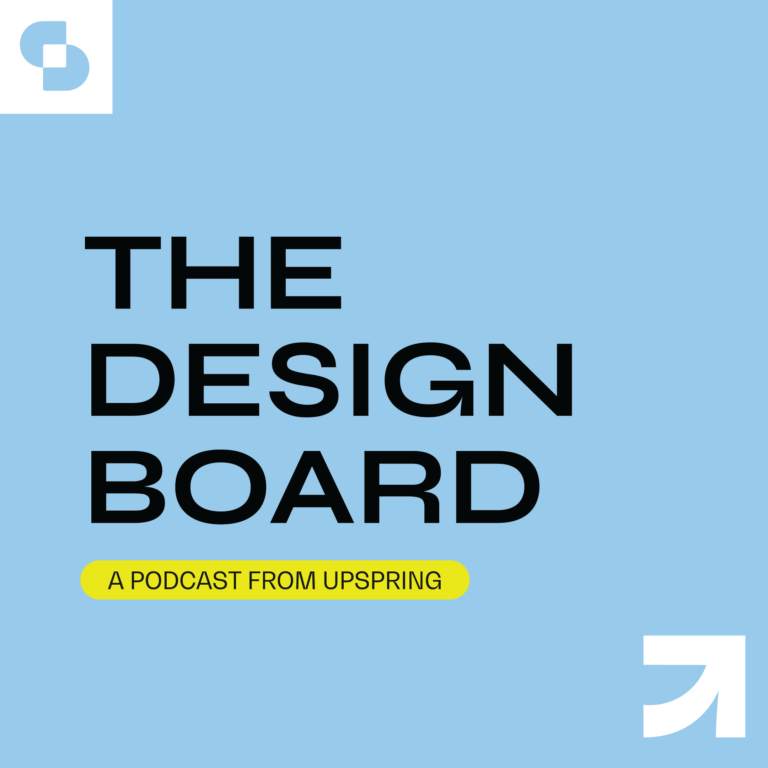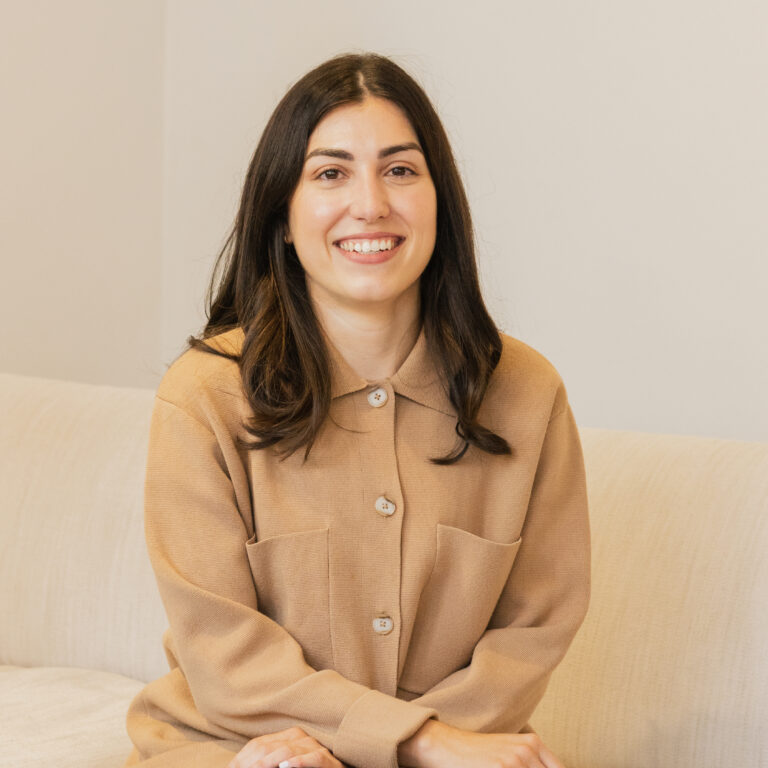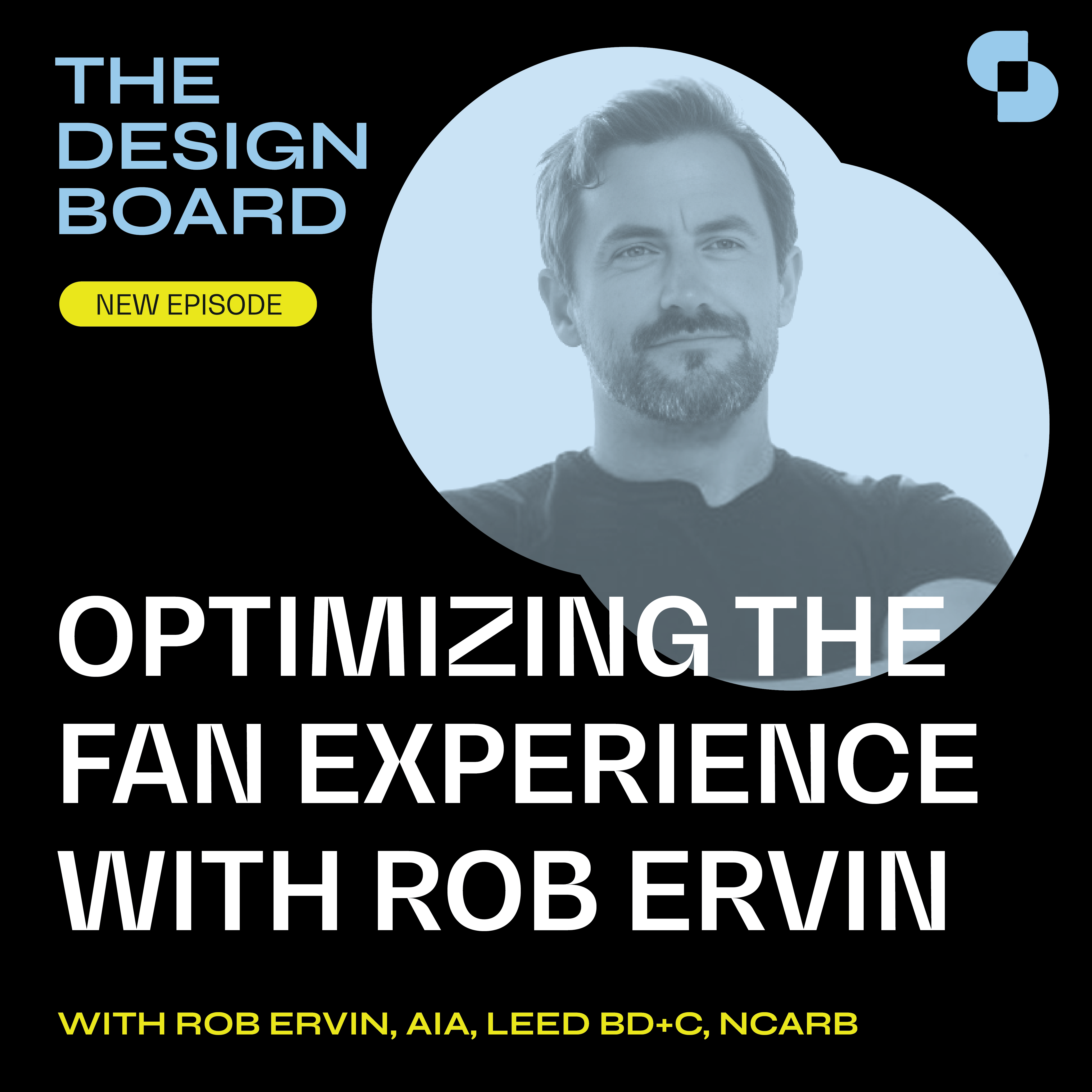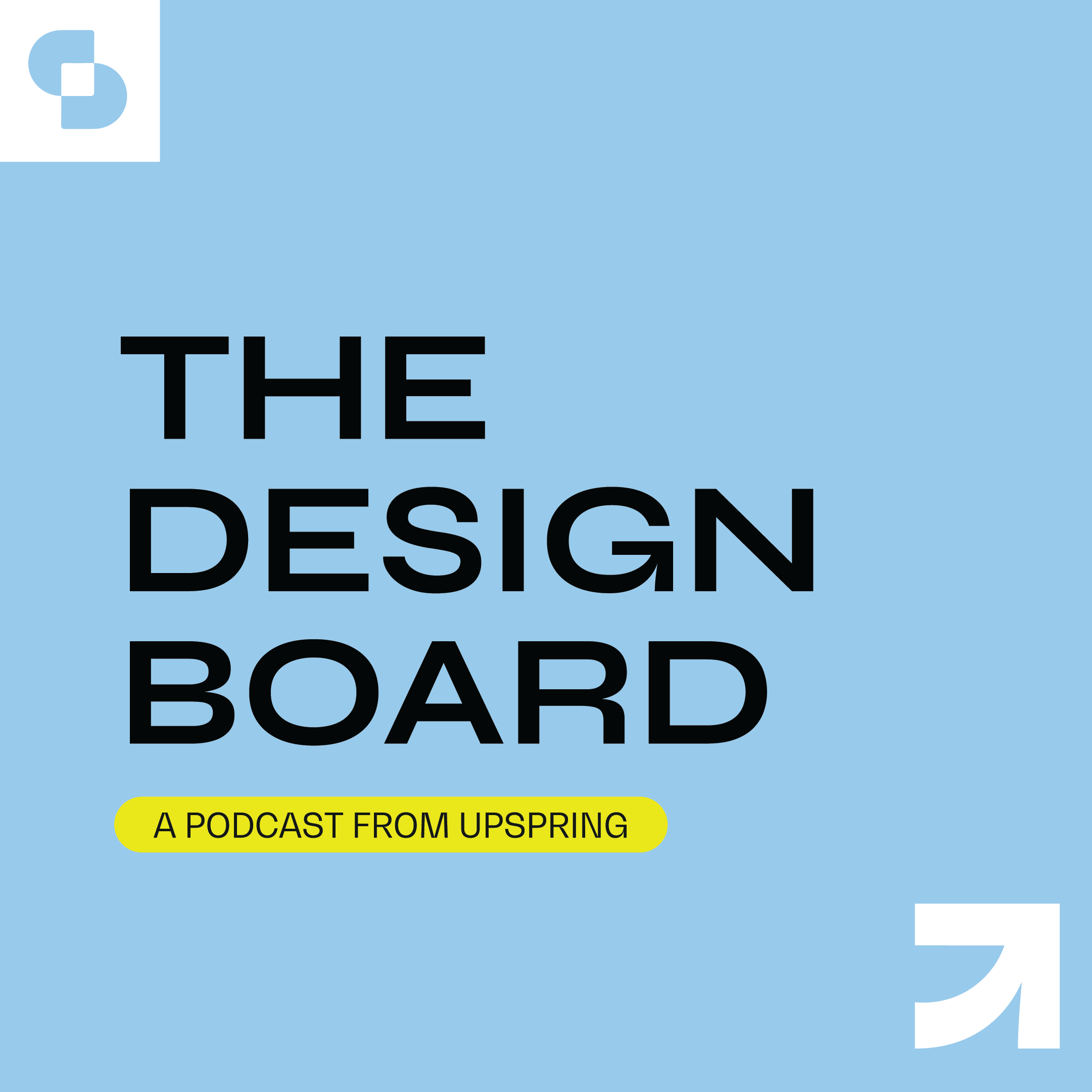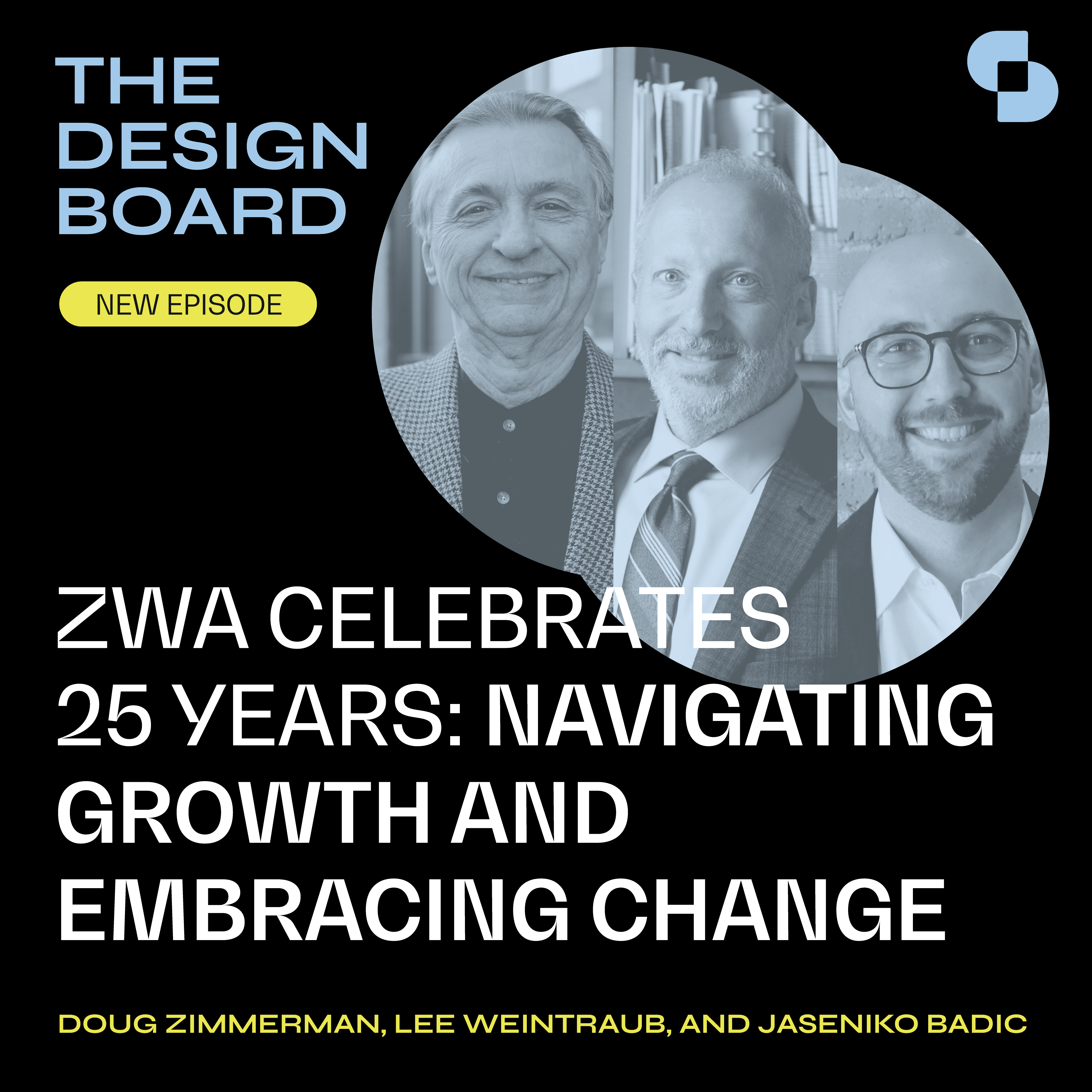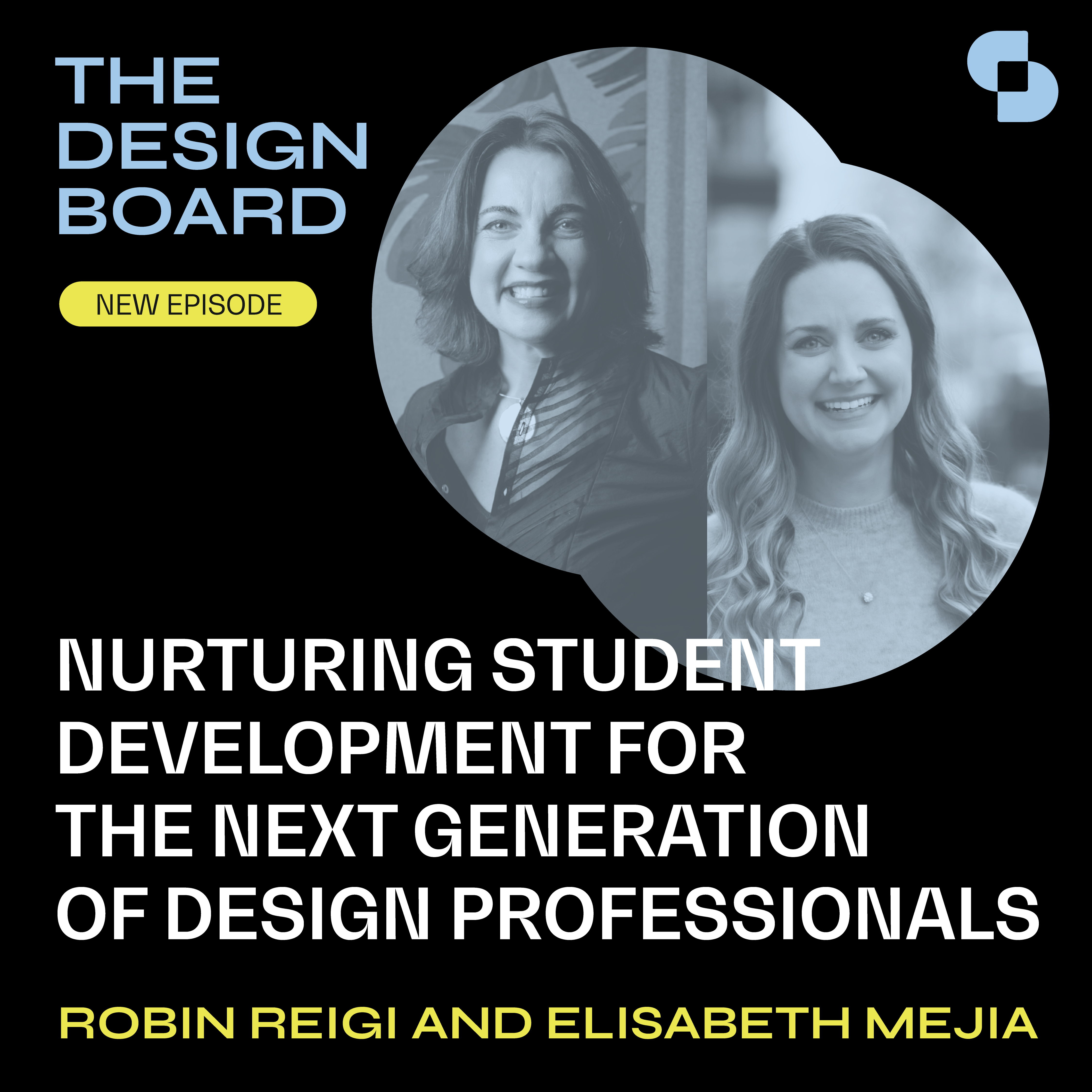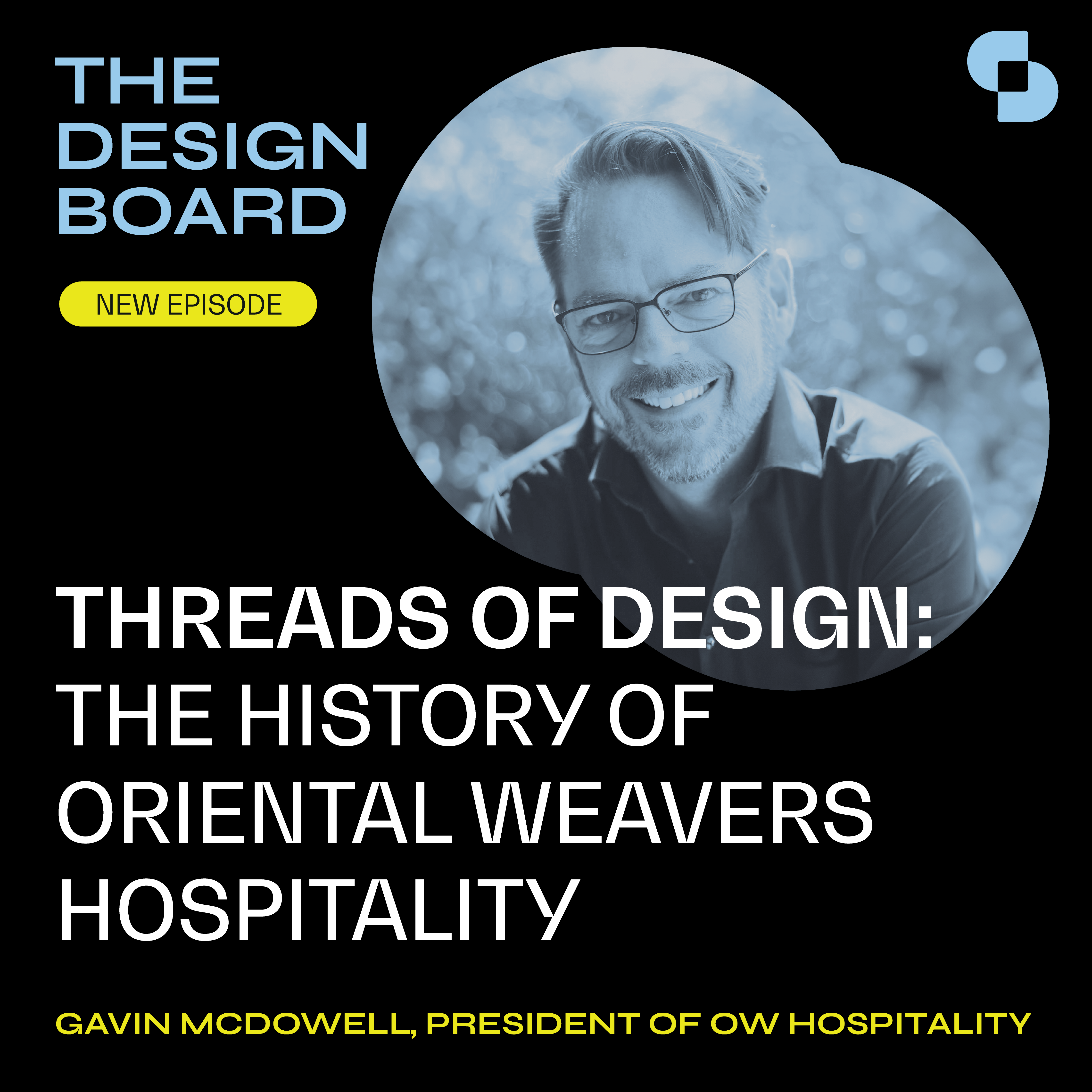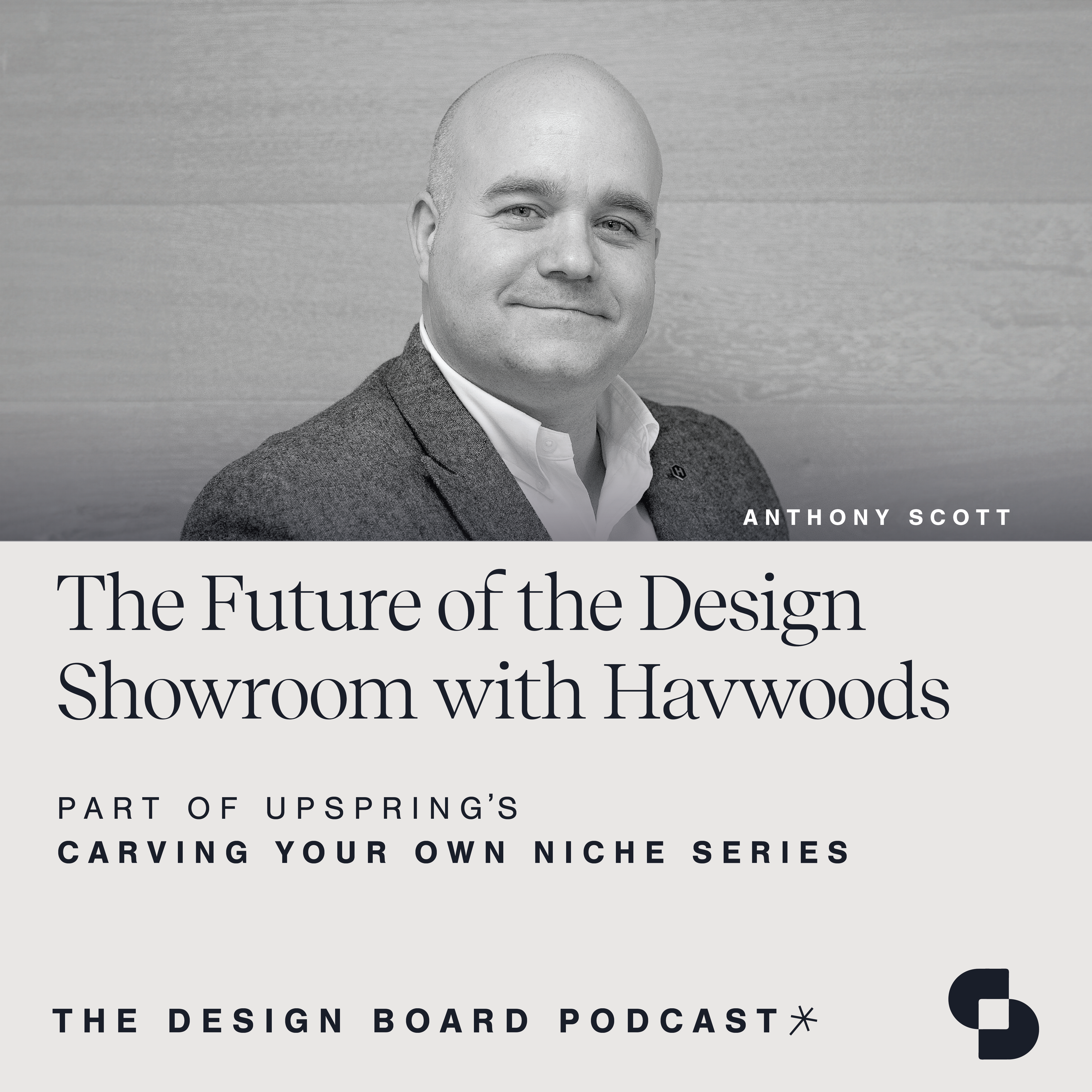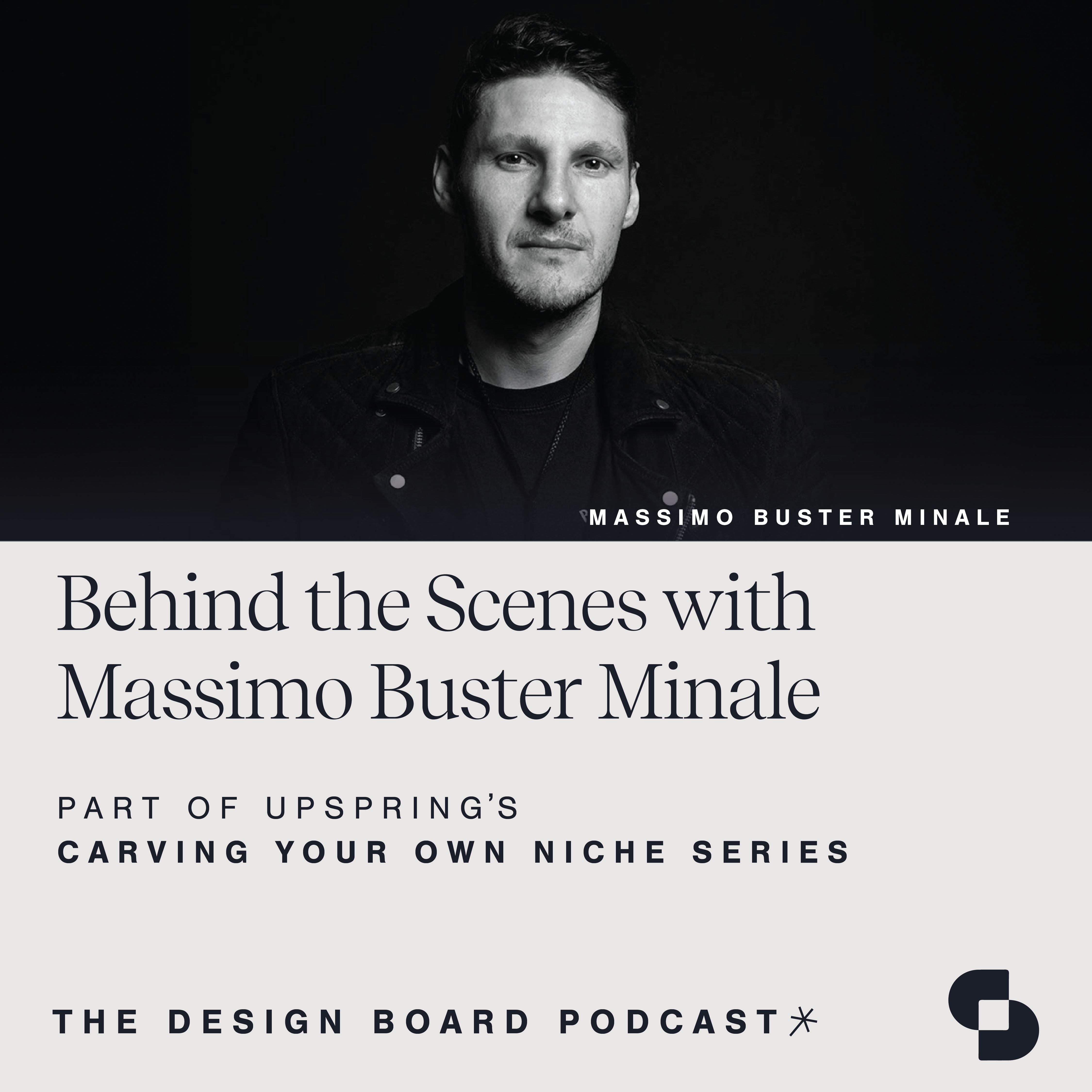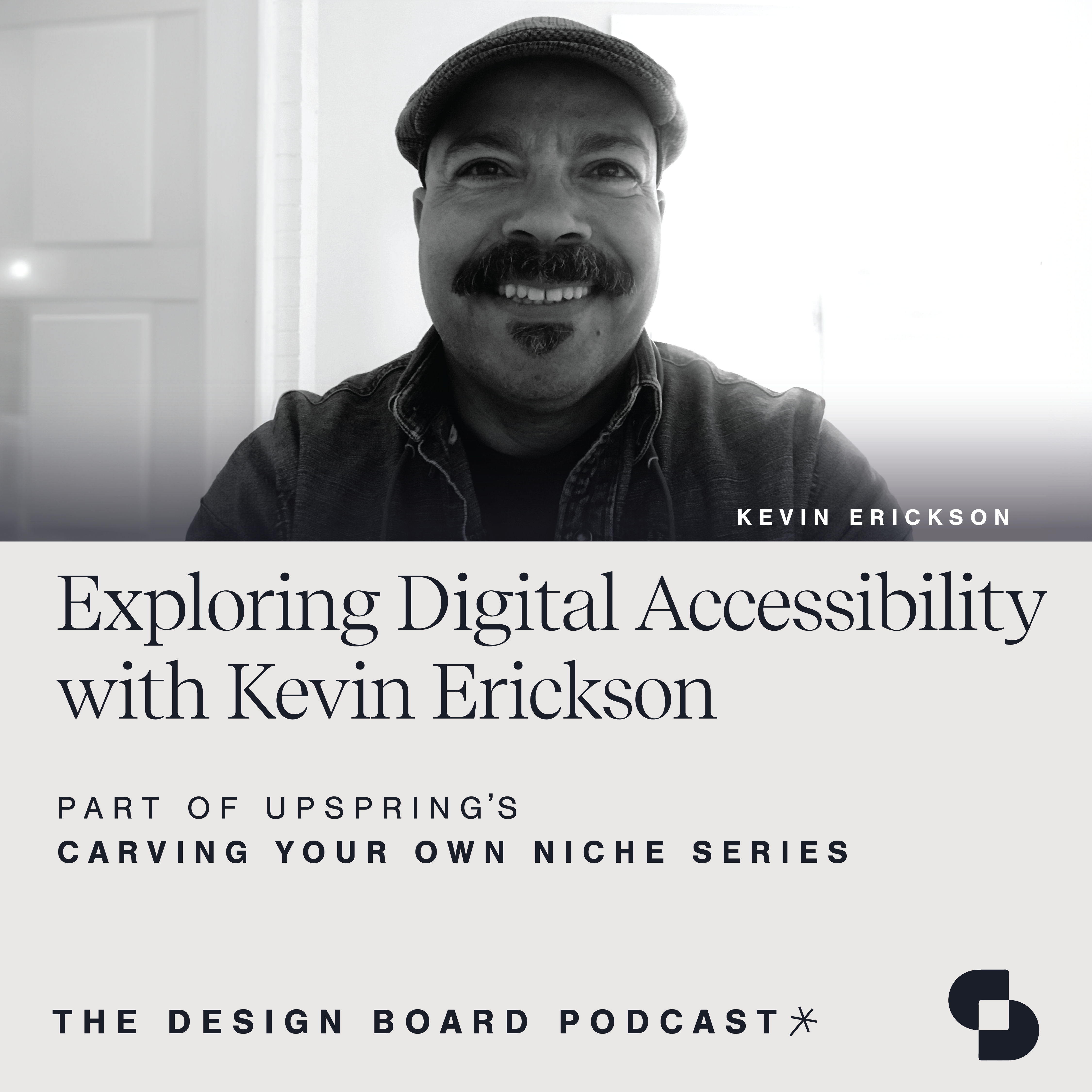The COVID-19 pandemic has shifted the demand for commercial real estate as more people work remotely, reducing the need for office space. At the same time, there is a growing demand for housing, especially in urban areas. Host Caroline Saba sits down with Dan Sullivan, Vice President of Kova, Nick Boever, Writer and Editor at Emerald, and Rick Whitney, Vice President of FitzGerald, to discuss the changing market demand trend toward commercial-to-residential conversions.
Speaker 1:
Welcome to The Design Board, a podcast created by the team at UpSpring that focuses on design, development and everything in between. We invite innovators in our industry and explore topics that support your growth in every way. The Design Board is a proud member of SURROUND, a podcast network from Standout Design Group, featuring the architecture and design industry’s premier shows. Check it out at surroundpodcast.com.
Caroline Saba:
Hi, everyone. Welcome to another episode of The Design Board. I’m your host, Caroline Saba, Vice President at UpSpring, and I’m joined by three incredible industry professionals, passionate about sustainability. Today we are going to be talking about the rise in commercial to residential conversions, but let’s start off with some quick introductions. First, we have Rick Whitney, Vice president at Fitzgerald’s, an architecture planning and interior design firm headquartered in Chicago. Rick is a leader in the firm’s pursuit of senior housing, affordable housing and hospitality projects, and he champions the belief that the adaptation and rehabilitation of older buildings is a viable course of action to energize the performance of existing projects.
I’m also joined by KOVA Vice President, Dan Sullivan. KOVA is a leader in integrated whole project building material solutions, from faucets and flexible interior wall systems to facades. Inspired by his unconventional journey in the A&D industry, Dan has set out to develop material solutions that enhance building performance and longevity. He’s passionate about creating building solutions that lead to a healthier built environment. Also with us today is Nick Boever. Nick is the former editor of DesignWell and current web editor of CEPRO, where he covers industry news regarding design and technology and how those can be applied to achieve better occupant health outcomes and a more sustainable construction.
Thank you all for being here with me today. I’m so excited to get started. So to kick things off, according to a recent report from the Urban Land Institute and the National Multi-Family Housing Council Research Foundation, repurposing commercial properties into multi-family housing is growing more common across various real estate markets and could provide a critical source of housing where there are shortages. I’d love to start things off by hearing your perspective on this emerging trend.
Nick Boever:
I mean, I think it’s really great for a variety of reasons. I mean, just to start off, coming in on the tail end of the pandemic, it’s a conversation that really needs to be had just as a means of discussing what’s going to be done with all these abandoned or downsized office spaces. We’ve gotten past the turbulence that was whether or not everybody is going to be returning to the offices or everybody’s going to be working from home. So, I think now property owners and everybody involved in that section of the industry is kind of in agreement of what the state of these spaces is going to be. And so, for the ones that aren’t going to get used up or maybe they’re going to be used at reduced capacity, the conversation surrounding what’s going to be done with them in all that empty space is great to be having.
I guess the other element of that is the fact that it’s really far in the future, but it’s still nice to be talking about it right now just as far as what’s going to be done as far as this post building, talking about post new construction, renovation style economy. I guess a good example of that would be talking about what’s going on in Japan currently, where a lot of their economy and building infrastructure focuses around the constant renewal and rebuilding and repurposing of buildings just because there’s not a whole lot over there as far as new space to build on. And like I said, while in America that is far off in the future, it’s something that’s really great to be having the conversation of right now just simply because people have not really been the best at talking about things super far into the future.
Caroline Saba:
I think that’s really interesting. And you started to hit on it too, that this has really taken off since the pandemic. So, I’d love to dive into that a little bit further. And Dan, I’d love to hear your perspective on how you think the pandemic has accelerated this trend.
Dan Sullivan:
Sure. Yeah. By the way, thanks for having us all on here. I think this is a great topic to be talking about, very timely, especially now as we walk through our downtowns. I mean, here in San Francisco, there’s real attention paid to the fact that our downtown has essentially died, that people who were in offices previously who contributed to the economies of downtowns have moved their primary workplace to the home and abandoned these enormous structures that were once the centers of activity.
So, as Nick was alluding to, I don’t know whether the pandemic was really the instigator of this, but we’ve been… Technology has really reached a point which is enabling us to be able to work from home with nearly the same effectiveness as we used to have in the office. And so, we are looking at this glut of real estate. But certainly now more than ever, we’re confronted with the reality, post pandemic, of what to do with this glut of real estate in our downtown places.
Rick Whitney:
If I could add to that, in Chicago we’re seeing what Dan’s describing where, post pandemic, it’s been quite a hit to downtown Chicago. We certainly saw the rise in empty office space occurring before the pandemic, but it wasn’t just the pandemic, I think, that affected us. There’s new construction happening in downtown adjacent neighborhoods. Fulton Market is one in Chicago, it’s just particularly been a focus of new office development and that’s drawn tenants from the older buildings or the ones that are becoming outmoded from best center to the neighborhood. So, we had the pandemic hit us, we also had just some obsolescence [inaudible 00:06:14] as well.
Nick Boever:
I think to add on to that, not just talking about the glut of empty real estate that is in these commercial sections of cities, but just the overabundance of… Or I guess the overgrowth of population in areas of the US where there hadn’t really been a high density population in the past. So, that movement is not just opening up a need for repurposing of new spaces in these commercial sections, it’s causing these other areas to become overrun with just people who can’t really find housing, it’s caused housing markets to go up.
And obviously, saying, “Build more homes and the prices of homes will go down.” Is a very simplistic way of looking at the market. But there is demand in those areas now where there wasn’t a whole lot before. And again, repurposing those buildings may be more feasible than relying on home building to just fill in the gaps there.
Dan Sullivan:
Yeah. And actually, to just tag on to Nick again there, the pandemic has really changed the kind of real estate that we look for, too, when we’re looking for homes. Now, we’re looking for larger spaces with, people referring to as, Zoom rooms, but places where they can actually accomplish work at home. So, it’s really forcing people to look for larger homes, which is changing the market demand.
Rick Whitney:
And that’s impacted the design of what we do. We do a lot of multi-family and having more well-appointed and more robust work from home spaces has certainly entered into our work.
Caroline Saba:
Yeah. This is so interesting. I think there’s a lot happening within these sectors too, and I love what you all are saying about what’s happening across the country as well and what this could mean both for our downtowns and then for the people working in those offices or working at home. So Rick, I’d like to get your perspective too on the benefits these conversions bring to the architecture and design community. And like I was saying, to that end user, to the community in which they live.
Rick Whitney:
Well, for architecture and design, certainly it’s the opportunity for work. It’s something… We’ve been converting commercial buildings in Chicago for many years. But it’s just in the downtown area, we’re starting to see more interest and more activities. So, on that side, there’s just a potential significant amount of work coming along. So, we love that. But also, saving buildings, we see it as a very sustainable thing to do rather than to take a building down and having to dispose of it. We see buildings can be reused very effectively for residential. But these buildings, also, they’re part of the surroundings that they’re in, they’re part of the neighborhoods in the communities that they’re in. And taking them out, replacing them, certainly can affect that community as well.
So, finding that use and reusing that repurpose and that revitalization of building, I think, is really important for communities. These building have all kinds of significance. It could be historic, could be the significant activity or a significant event occurred at this building, artistic, just the design of the building itself, or the cultural and even emotional weight that the building carries within the community.
Caroline Saba:
Yeah. I think that’s great. And then, to that end, too, what about your perspective on the feasibility of these conversions? And what strategies or steps would you implement to determine if a commercial property is suitable for a conversion?
Rick Whitney:
Well, when we look at them, one of the things we look at is the floor plate itself. Narrower floor plates are generally going to work better for a conversion. Looking at office buildings in particular, but even non-office buildings, larger and deeper floor plates are much harder to convert to residential. You’re going to yield a less efficient floor plate standpoint. We can only use so much of it. We estimate. Typically, we can use about 50 to 55 feet of depth from the exterior wall at the most for residential use. Anything beyond that, it becomes much more difficult to find a use for that space. So, that’s something we look at. Another is looking for means of egress in the building, which, I mean, primarily the stairwells. Buildings that were designed in the late part of the 19th and early part of the 20th.
Building codes were so much different. We’ve walked into plenty of buildings where there is one stairwell served in the building and the remaining vertical egress was by fire escapes, which if you’ve ever had a chance to take one of those, I wish you well. It’s exciting to say the least. So, a building with one stair, we’re going to have to put another one in. And so, that’s really a cost thing that we advise our owners on. Vertical circulation. I mean, elevators. Most office buildings of that same vintage were probably over elevator, so we don’t tend to use all the elevators that were in there. But the size of the elevators are a challenge. And particularly, with the current accessibility and emergency codes, we find ourselves we may have to enlarge [inaudible 00:11:42] to put a compliant elevator.
And then finally, maybe a smaller thing, but a building on a corner is a much better candidate than a mid-block building because most codes required that residential units be provided with natural light and ventilation, and we get better access to that from a corner building than we do on a mid-block building. Interior property lines, there’s often certain setbacks you have to have from those lines to be able to use the windows on those elevations. So, a corner building is a big plus for something like this. So, those are some of the things we look at.
Caroline Saba:
Okay, great. That’s super interesting. It gives an in-depth look, too, about what that could potentially look like. And then, what about vacancy? Is that a requirement for adaptive reuse projects?
Rick Whitney:
We certainly don’t think so. We’ve converted partial buildings before. High back around 2000, we converted a building right on Michigan Avenue in Chicago. We converted the top six floors to residential. The owner’s job at that point was to consolidate the tenants that were on those floors, find new locations [inaudible 00:12:50] the building, which they certainly had. They were experiencing some vacancy, which drove their decision to make this conversion.
So, it’s easier, from a construction standpoint, when the building is empty. It’s not impossible. For example, this project that I mentioned, we had six floors of residential [inaudible 00:13:11] office. Residential buildings require a lot more plumbing than an office building does. We had a lot of waste stacks coming down. We had to collect and get down through the rest of the building. It was a little bit more of a challenge. But certainly not impossible, it’s one that can be addressed. So, a building doesn’t have to be entirely empty to get done. Yeah.
Caroline Saba:
Okay, great. That leads to another question I had. And Dan, I’d like to get your perspective on this one about, if that building is occupied, how do you minimize disruption when you’re going to construct that project?
Dan Sullivan:
Yeah. I love Rick’s list of the parameters that work for residential in a metric fashion. But just peering back into history and which buildings are easy to repurpose versus difficult to repurpose, we have a really easy time reusing. And by the way, sorry, I’m speaking more toward general repurposing and not specific to residential. But it’s easy to repurpose hangers, train stations, old museums, churches, the old mill building. So, if you look at those buildings and what makes those reusable therein, you find the rules of thumb that make conversions more feasible. And just to add to Rick’s list, things like floor-to-floor heights that can accept a variety of mechanical systems, daylight, access to daylight, good windows. But then also, to pick up on one of Rick’s former points, buildings that actually have character, that contribute to the fabric of the city and actually speak to us in an emotional way and make us want to love them and continue to reuse them.
So, just adding that. But then, jumping to your point about vacancy, we have, for a long time, explored the idea of modular construction, I think, but certainly, for those of us who studied architecture, it’s been an obsession since the early 20th century. But we’re at a point now where the dream of modular construction is becoming a reality. And a lot of senses, especially, when we’re talking about interior builds, now there are a lot of products in the market that can enable a floor plate to be built out without hammers, saws, drywall, dust, messy, loud construction to the degree that we can leverage those systems for the renovations and they can certainly make occupancy possible during a build-out.
Caroline Saba:
That’s great. I like what you were saying too, Dan, about really the psychology of space as well. I think that’s really interesting, and it ties to this conversation about really creating places that people can live in over a long period of time.
Rick Whitney:
That’s a great point. If I could add to that, that’s one thing, I think, adaptive reuse projects like this bring. It brings a space with character, a unique character. No two conversions are alike, no two buildings like this are alike, and each one has its own story, its own history. And really, finding those things in a building’s history and making that part of the new use, I think, is one of the unique opportunities for projects like this. It’s something I certainly like. That’s why I love doing these projects.
Nick Boever:
I think, if I could actually add in a personal anecdote to the area I live out by, Massachusetts. The entire state is just basically overrun with old mill buildings. And so, a lot of the housing options that you have in this area are these old renovated mill buildings. And I can tell, at the very least, from a city nearby, the city of Lowell, that renovation and restoration of those old mill buildings have played a heavy factor in the city’s attempt to bring about a cultural renaissance in there. You have Jack Kerouac calling this place home, and they’ve taken that idea and taken all of these different buildings and use that to build a very thriving artist community out of that.
Caroline Saba:
That’s great. Yeah. I think this gives a great outlook to the future. It’s such a positive one, too. For the nitty-gritty details like floor plates, windows assistance, and HVAC, what challenges do we face when working on conversion projects and what are some general strategies to overcome them? Dan [inaudible 00:17:43] perspectives on this as well?
Dan Sullivan:
Yeah. I think Rick is probably going to be more adept at handling this, but I think it goes back to the previous question, which is starting with the right building, making sure that you’re unraveling a sweater of retrofits to suit your purpose. So, I think all of Rick’s perimeters on floor plate, depth and floor-to-floor height, low toxin sites, et cetera, I think, play a role in this.
Rick Whitney:
Yeah. Some things we see, commonalities, among the stuff that we’ve done. Having the building structure in place is one of the biggest values to a project like this. Not only do we have to not put a new structural system and we don’t have to do the foundation, and therefore the excavation, all that comes with that. So, that’s a huge plus for a project like this. But when we get to the building envelope, inevitably, we have to upgrade the envelope. Original windows, we’ve walked into many buildings that had single pane wood or single paned steel windows, which, obviously, they’re just not going to suffice for a residential conversion. So, window replacement is almost always necessary. It’s a costly endeavor too, but you would have that at new construction as well.
Another thing is mechanical, electrical and plumbing systems. We almost always put in new systems in an old office building or an old warehouse or industrial building. Those systems were, obviously, never intended to serve a residential population. So inevitably, end up plugging those out and putting in new systems. So, that’s a cost that’s also consistent with new constructions, it’s something that I need to go in and do. But it does give us the opportunity to develop better performing buildings. Working on the envelope, we can make it more thermally efficient. We can make a tighter envelope that way, when we get to do those things. And that will help us. We can more right-size the HVAC systems so that they’re working in concert with a more thermally efficient envelope. And it gives us a chance to use more energy efficient electrical fixtures as well as more resource responsive plumbing system [inaudible 00:20:07].
So, there’s some costs that come with that, but there’s some opportunities that come with it as well. And then, the things I mentioned about the stairs and elevators also go into this. They make up some of the largest costs in a project like this. So, those are the ones that… We make sure that our clients understand that as we embark on projects like these.
Caroline Saba:
Yeah. That’s great. That makes sense, that that communication aspect is important. And then, Dan, how does this trend align with the industry’s growing interest in design circularity and product re-configurability?
Dan Sullivan:
Sure. Well, I might take those as two different things. Circularity, at its base, is really just about being low toxin, low carbon, and low waste. So, low toxin really is about the types of materials that you use in the building. Low carbon is about the embodied energy in what you put in the building. And low waste speaks for itself. I mean, sustainability, at this point, is really built into many companies’ real estate plans. It’s not optional, it’s required by them. And then, even further, can be required by jurisdictions. But also creates opportunities for certifications like LEED or Living Building Challenge, which ultimately can be differentiators for developers who are building spec office buildings and ease of getting tenants. But also differentiators for people who… For companies who want to tout the virtues of being, quote unquote, “sustainable.”
I mean, there’s definitely… It’s an interest that the industry has in circularity, but I think it’s more of a social societal movement. And I think it’s finally matching up with the business case. So, all the stuff that we’re talking about in terms of reuse, in terms of its impact on waste, et cetera, is really aligned with this sea change in the construction industry.
Rick Whitney:
Your point of sustainability is a great one, Dan, because for years, obviously, we’ve… Sustainability and certification would usually come as a requirement for municipality. But now, we’ve got clients that are coming to us, from a corporate standpoint, they’ve set some pretty rigorous sustainability goals. So, they bring that to the projects that we work with them on. So, it truly is a sea change, as you mentioned, where we’re seeing a change almost daily. We have a sustainability director that works with us. And even the discussion now is just, do we need certification systems to do this? Or are we going to see companies that do have their own sustainability goals and their projects are simply going to conform to their company or their corporate or responsibilities and goals? It really is a sea change, as you say.
Nick Boever:
I think the other thing that’s really important to note with this is just the fact that… Talking about just the idea of when you’re approaching these types of projects and you’re thinking to yourself, how can you overcome some of the limitations? Say you’re going into a commercial space that was never meant to be built for residential use, and you’re trying to figure out how you can work with all these systems to get it to that residential level. It’s really great to be able to have an opportunity to look at that, because as these projects become more and more numerous, you have people coming to the idea that, “Well, if we want to make it easier for ourselves to do these conversions, we should build with adaptability in mind first.”
And I think having the opportunity to look back, see that we already have a lot of buildings in place. And so, the amount of new buildings that we’re going to need in the future are dwarfed by the number of buildings that we already have. But for those future construction projects, we can start to look at them as, “Okay. We’re building an office, but somewhere down the line, maybe it’ll need to be turned into a MDU. And so, we should probably build this with a little bit more re-configurability in mind this way.” And I think that is going to, again, contribute to the idea of circularity in the future.
Dan Sullivan:
Yeah. Nick, that’s such a great point. You look back at our history and we, just as human beings, are so bad at predicting the future. And so, if we just give ourselves the ability to be wrong at low cost and low impact to the environment and to budgets, we’re really setting ourselves up for success in the future.
Caroline Saba:
Yeah. I like that. It’s almost like a universal layout for these types of buildings or that perspective moving forward so that they can adapt and be flexible over time. And then, Dan and Rick, I’d love to hear your thoughts too, on what ways project collaborators come together to ensure that an adaptive reuse project is built to last?
Dan Sullivan:
Sure. I mean, I really think… Rick, you’re boots on the ground, so you’re much more in the weeds on this. But I mean, I think starting with the admission, like I just said, that we’re bad at planning for the future and setting off as part of the basis of design for these buildings that they are future-proofed is one way that that actually becomes part of just the project brief. But then, I guess it really is thinking of the ecosystem of people who participate in a building coming about and committing as a group of people to learning from each other through these individual processes to build them into more rules of thumb or best practices that can be adapted by other teams going into projects as well.
Rick Whitney:
Yeah. Usually, when it comes to planning for something that’s going to last, that’s going to endure, we try to bring on the team as early as we can. We want all that feedback early on, and that includes general contractors. We want them in as well. A lot of decisions are made early on with a building, what can we reuse versus what do we need to change? And sometimes, a client may want to do something that is a very first cost beneficial decision that down the road could lead to an issue. So, we really try to leverage the team to look at those decisions and make sure that what we’re doing is going to benefit the building and the owner in the long run. So, having the team early on, that’s one of the things, I think, that we do to help with that.
I think another thing that helps our decision making process is always keep the end user in mind. It’s highly likely that most people in the design team may not be living in this residential building when it’s done. So, we don’t often get to see who the end… Or directly talk to the end users. But keeping them in mind and making sure that what we’re delivering is going to really provide a quality dwelling, but also one that is as [inaudible 00:27:35] as we can. Dan, you’re absolutely right. It’s hard to predict the future. I’ve been with Fitzgerald’s for 33 years and things that we’re seeing now in buildings, we never imagined when we started 30 years ago. So, it’s difficult to see in the future, but really getting that team on board early, just brings more perspectives, more insight, and more information to make decisions.
Dan Sullivan:
Yeah. And actually, just to tag one more thing onto that too, I think the products that we put into the buildings are also really important here. I mean, this goes back to the point about flexibility, is that if we are using systems that are not going to generate waste when we know we need to move them, I mean, that’s building to last. It’s not about building a concrete wall, it’s about building the wall that performs as well as concrete that can be relocated, and at the end of its useful life, disassembled and used as a raw material in the production of another product.
Caroline Saba:
I think that’s great. I love both of those perspectives. And then lastly, I’d really like to end on a piece of advice for our listeners. What would you recommend to someone, whether that’s an architect, designer, or a product manufacturer that’s interested in navigating commercial to residential conversions? Nick, I’d love to start with you on this one.
Nick Boever:
Yeah. So, I’ll come about it from, I guess, an inspiration standpoint, because I guess at the end of the day, I am more trained in the arts than anything else. And I like to view design and architecture as an art because just look at any architectural project, they’re beautiful most of the time. But anyways, getting back to the point, just being able to keep abreast of what’s going on in the industry, looking into industry publications. A lot of the design and architectural publications, they’ll do this fantastic job of showcasing all of these different projects that are taking place within the industry.
And as much as I want to stress the importance of understanding the basics to get yourself started, reading over that, best practices, all those sorts of things. Just all of the best laid plans can’t survive first contact on a project most of the time. And so, being able to view these projects that other architects or designers are completing in the world and how they’re approaching these projects is really vital for people. It’s a great way of trying to get a feel for how this stuff might look in the real world.
Caroline Saba:
That’s great. Rick, what about you?
Rick Whitney:
I think, going back to one of the points that I made earlier, projects like this, existing buildings, they come with stories. They’re not coming in as newcomers. So, really understanding the building, understanding its history, and learning the stories about that building and being able to tell it again in its new use. I think, for us, and we’ve done many conversions, that’s one of the, I think, success factors we’ve seen in projects like that. That story, it communicates to the owner, it communicates to the end user, and it communicates to the community and something to find that story and make it part of what you do.
Caroline Saba:
I love that. Dan, what about you?
Dan Sullivan:
Yeah. Rick, I love that too. I mean, I love situating just the humanness, really, at the center of this, the human story. I would also say that… Again, when we talk about a commercial to residential conversion, we’re probably not talking about the last time that building is going to be converted. There’s a future moment where we have a need that we haven’t foreseen. And potentially, those residential units are converted to something else. So, I think maybe we think about buildings as experiments, experiments for better living, for being better humans, and to work as an industry to close that gap between how quickly we evolve as a human and how quickly buildings evolve, which are currently at two vastly different speeds. And invest in building as commercial and cultural assets that gain value every time that they’re adapted. So, the value and adaptation actually becomes part of our core principles.
Caroline Saba:
That’s great. I like that perspective too, of the importance of the human in that space and then how that ties back to the way we’re building. Amazing. This has been such a great conversation. Thank you all, again, for joining and contributing.
Dan Sullivan:
Yeah. Thank you. This was great.
Nick Boever:
Yeah. No, it was a wonderful time talking.
Rick Whitney:
Yes. Thank you, Caroline. This was great. Really appreciate it.
Speaker 1:
Thank you so much for listening in with us today. We hope you leave inspired by the ideas in today’s episode. For more, follow UpSpring on LinkedIn and Instagram. And don’t forget to check out the amazing lineup of shows brought to you by the SURROUND Podcast Network at surroundpodcast.com.

